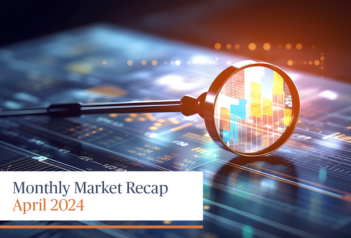While the headlines around rising COVID cases in the U.S. (and Europe) seem grim, the market has so far rewarded investors with the recent vaccine news from Pfizer and Moderna.
The macro outlook remains fraught with mixed signals: on one hand, improving economic data, a better-than-expected earnings season, and post-election results are tailwinds for the market; on the other hand, equity valuations, uncertainty around the timing and size of the next fiscal stimulus deal, and rising cases ahead of Thanksgiving and Christmas are concerning all together.
In the near-term, the market is focusing on the promise that vaccines and herd immunity will champion the economic recovery into early 2021.
Through that lens, the market (measured by the S&P 500 index) has retested its all-time high. What may be less apparent is the internal rotation between sectors and industries since early September. In other words, the leadership from the “stay-at-home” growth stocks in the Spring has been moving to more cyclical, or value stocks that would benefit from the economy reopening sooner. The following chart highlights some the recent performance:
As an investor, should you care whether Growth continues to outperform Value? Or that small-cap stocks are catching up to their large-cap brethren? This outperformance has been going on since 2008 and many pundits are opiating about a potential mean-reversal to Value (see graph below). Others are predicting a continuing outperformance of Growth given the low rates and low economic growth environment.
First, let’s define Growth and Value. In simple terms, growth stocks are stocks that are anticipated to grow at a rate significantly above the average growth of the market. Value stocks tend to trade at a lower price relative to fundamentals. For now, let me leave it at that- value versus growth investing attributes have filled many, many books and famous investors bestowing the qualities of each one over the long-term.
History is filled with famous quotes espousing the virtues of one discipline versus the other. Yet, value doesn’t always mean cheap, and growth doesn’t always mean speculative. The reality is timing when one style will outperform the other one on any sustainable basis is very hard. As the chart above shows, you can be right for a few weeks, yet wrong for several years.
We prefer to build portfolios that capture the merits of owning good companies over the long-term. We construct client allocations around a strategic core passive strategy in order to provide tax-efficient, total exposure the market (thus removing any timing decision). We then complement this core allocation with who we deem to be great investors in their respective value or growth strategies. While each active manager holds itself to a benchmark, we stress the importance of their investments in quality companies that are also great stocks.
Smaller and international companies have the same attributes but also expose investors to other risks as well such as solvency and currencies. Yet, our process is the same: invest in the best global businesses, wherever they are domiciled.
Certainly, we have an opinion on the potential longevity of this rotation, but we realize that portfolio discipline and diversification are much more important levers we can control in achieving your goals.
If you have any questions or want to have a conversation about the market or your portfolio, please contact Liz, Ed, Fred, Scott, Tyler, or myself. Your Sendero team is ready to help.
Best Regards,
Amaury de Barros Conti
210-930-9409
aconti@sendero.com


